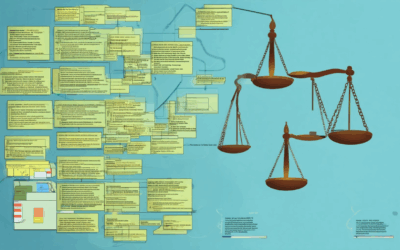Effective board governance is the cornerstone of success for nonprofit organizations, playing a pivotal role in steering operations, ensuring accountability, and driving mission impact. As nonprofits navigate complex landscapes, characterized by limited resources and evolving regulatory demands, the importance of robust governance practices becomes magnified. This article delves into the essential board governance best practices, exploring key components, roles, and responsibilities that contribute to organizational effectiveness. From fostering strong governance committees to embracing best practices in board composition and strategic alignment, we will examine how these principles can enhance decision-making, financial oversight, and stakeholder engagement. By adhering to these guidelines, nonprofits can achieve greater mission fulfillment and cultivate lasting trust among donors, volunteers, and other key stakeholders.
Key Takeaways
- Clarify roles and responsibilities for effective board operation.
- Promote open communication for trust and alignment.
- Review financials and reports for informed decision-making.
- Adhere to ethical guidelines for stakeholder trust.
- Engage stakeholders in decision-making.
- Conduct self-assessments for continuous improvement.
- Use tech tools for efficient governance.
- Balance immediate needs with long-term objectives.
- Foster collaboration and open dialogue.
- Anticipate challenges for prepared governance.
- Invest in ongoing professional development.

Key Components of Effective Board Governance
The effectiveness of a board’s governance framework hinges on several critical components that work synergistically to ensure organizational success. Below, we outline the essential elements that define robust board governance:
- Clear Vision and Mission
- A well-defined vision and mission statement provides the guiding principles for the organization.
- The board ensures alignment of all activities with these objectives, fostering a cohesive strategy.
- NPO Expert emphasizes the importance of a shared vision in driving long-term impact.
- Accountability and Oversight
- Board members are accountable for their decisions and must ensure transparency in operations.
- Regular monitoring of progress toward goals helps maintain focus and accountability.
- Effective oversight mechanisms are crucial for maintaining trust and integrity.
- Diverse and Talented Board Members
- A diverse board brings varied perspectives and expertise, enriching decision-making processes.
- Recruitment efforts should focus on individuals with complementary skills and backgrounds.
- Diverse boards are better equipped to navigate complex challenges and adapt to changing environments.
- Strategic Planning and Adaptation
- Strategic planning identifies key initiatives and aligns resources with organizational goals.
- Flexibility is essential to adapt to market changes and emerging opportunities.
- Continuous assessment allows the board to refine strategies and stay ahead of competition.
- Risk Management and Mitigation
- Proactive identification and mitigation of risks ensure organizational stability.
- Clear policies and contingency plans prepare the board for potential challenges.
- Regular audits and evaluations help identify vulnerabilities early.
- Committee Structure and Functionality
- Committees streamline decision-making by focusing on specific areas like finance or governance.
- Effective communication between committees and the full board ensures coordinated efforts.
- Committee chairs play a vital role in overseeing specialized functions and reporting to the full board.
- Stakeholder Engagement
- Regular engagement with stakeholders ensures alignment with external expectations.
- Feedback mechanisms allow the board to address concerns and improve operations.
- Building strong relationships with key stakeholders enhances reputation and support.
- Compliance and Ethical Standards
- Adherence to legal and ethical standards is non-negotiable for board governance.
- Robust compliance programs minimize legal risks and ensure operational integrity.
- Ethical conduct fosters public trust and distinguishes the organization.
By integrating these components, boards can lead their organizations toward sustained success. To learn more about optimizing your board governance, explore resources from NPO Expert .
Key Elements of Effective Board Governance
The effectiveness of a nonprofit organization’s governance is determined by several critical components that work together to ensure strategic direction, accountability, and organizational success. Below are the primary elements that define effective board governance:
- Clear Mission and Vision
A well-defined mission and vision statement serves as the foundation of the organization’s strategy. The board ensures that these guiding principles align with the organization’s goals and remain relevant in a dynamic environment. This alignment fosters unity among stakeholders and provides a roadmap for achieving impactful outcomes. - Comprehensive Policies and Procedures
Robust policies, including those related to conflict of interest, financial oversight, and risk management, are essential for maintaining integrity and accountability. These policies guide decision-making processes and ensure that the board operates in accordance with legal and ethical standards. - Strategic Oversight
The board’s role extends beyond operational management to include strategic planning and oversight. Effective boards regularly assess organizational performance, identify emerging challenges, and establish measurable objectives to drive long-term success. This proactive approach ensures the organization stays on track to meet its mission. - Accountability and Transparency
Accountability is a cornerstone of effective governance. Boards must hold themselves and senior leadership accountable for delivering results, adhering to budgets, and maintaining transparency with stakeholders. Regular reporting and open communication channels help build trust and credibility. - Informed Decision-Making
An informed board makes decisions based on data, analysis, and input from diverse perspectives. This includes seeking input from staff, volunteers, and external experts. Engaging in continuous learning and staying updated on industry trends ensures that decisions are well-informed and aligned with best practices. - ESG Alignment
Increasingly, boards are expected to consider Environmental, Social, and Governance (ESG) factors in their strategies. Integrating ESG principles enhances organizational resilience and aligns the organization with global standards, appealing to mission-driven donors and partners. - Board Composition and Diversity
A balanced and diverse board brings varied expertise and perspectives, fostering innovation and better decision-making. Recruitment processes should prioritize candidates who can contribute unique skills and experiences, ensuring the board reflects the diversity of the communities it serves. - Regular Communication and Feedback
Effective governance requires ongoing dialogue between the board and stakeholders. Regular updates, feedback mechanisms, and transparent communication channels ensure alignment between the board’s strategic priorities and the organization’s daily operations. - Risk Management
Proactive risk management identifies potential threats and establishes mitigation strategies. This ensures the organization navigates challenges effectively while safeguarding its mission and assets. - Continuous Improvement
A commitment to learning and adaptation drives sustained governance excellence. Regular self-assessments, benchmarking against peers, and incorporating feedback lead to continuous improvement and stronger organizational performance.
By focusing on these key elements, boards can ensure their organizations operate efficiently, adapt to changing circumstances, and deliver on their missions effectively. For further insights, explore resources like BoardSource and Nonprofit Governance Guide .

Best Practices for Board Governance
To ensure effective and efficient governance, boards must adopt a proactive approach that aligns with organizational objectives. Below are key best practices for board governance:
- Define Clear Roles and Responsibilities : Establish a well-defined structure where each board member understands their role. This includes distinguishing between the board’s advisory versus executive functions.
- Foster Open Communication : Encourage transparency by scheduling regular updates and maintaining open channels of communication with stakeholders. This helps build trust and ensures alignment with organizational values.
- Align Strategy with Impact : Regularly evaluate the organization’s strategic goals and ensure they align with its mission and vision. This involves setting measurable objectives and tracking progress.
- Promote Diversity and Inclusion : A diverse board fosters innovation and represents the communities served. Actively seek candidates from varied backgrounds to enrich decision-making processes.
- Enhance Decision-Making Processes : Utilize data-driven approaches and encourage debate to reach informed decisions. Document decisions and share rationale to ensure accountability.
- Evaluate Effectiveness : Conduct periodic self-assessments to identify strengths and areas for improvement. Seek feedback from stakeholders and use it to refine governance practices.
- Safeguard Compliance : Stay updated on legal requirements and ensure adherence to regulations. Engage legal experts when necessary to mitigate risks.
- Encourage Continuous Learning : Support ongoing education for board members through workshops or resources. This keeps governance aligned with evolving challenges and opportunities.
- Engage Stakeholders : Build relationships with key constituents, including donors, volunteers, and partners, to gain insights and strengthen partnerships.
- Adopt Technology Wisely : Leverage digital tools to streamline operations and enhance collaboration. Use platforms that support secure communication and document sharing.
By implementing these practices, boards can drive organizational success and contribute meaningfully to the communities they serve. For further insights into nonprofit governance, explore resources on Nonprofit Board Management and related topics.

Key Best Practices for Effective Board Governance
Here are the essential strategies for achieving strong board governance, optimized for clarity and SEO:
- Define Clear Roles and Responsibilities : Ensure each board member understands their role, whether as a director, committee chair, or advisory member. This fosters accountability and efficient decision-making.
- Foster Open Communication : Regular updates, transparent discussions, and accessible channels keep members informed and engaged. Effective communication builds trust and alignment with organizational goals.
- Stay Informed About Organizational Performance : Board members should review financial statements, strategic plans, and operational reports to make well-informed decisions. This requires active engagement with key documents.
- Promote Ethical Standards : Establish a culture of integrity by enforcing conflict-of-interest policies and ensuring adherence to legal and ethical guidelines. Ethical governance strengthens stakeholder confidence.
- Encourage Stakeholder Engagement : Involve key stakeholders, donors, and volunteers in decision-making processes. Their input enriches board discussions and aligns actions with community needs.
- Regularly Evaluate and Improve : Conduct periodic self-assessments to identify strengths and areas for growth. Continuous improvement ensures the board remains effective and responsive.
- Leverage Technology Wisely : Utilize digital tools for efficient communication, document management, and decision tracking. Embrace innovation to enhance governance efficiency.
- Focus on Long-Term Sustainability : Align decisions with long-term objectives while considering immediate needs. This balance ensures organizational resilience and impact.
- Maintain a Collaborative Environment : Foster teamwork and open dialogue among board members. Collaboration drives innovation and shared accountability.
- Adopt a Proactive Approach : Anticipate challenges and opportunities by staying ahead of trends. Proactive governance prepares the organization for future demands.
For further reading, explore our comprehensive board governance guide and related resources to enhance your nonprofit’s leadership effectiveness.
Best Practices for Effective Board Governance
NPO Expert has compiled a comprehensive guide to effective board governance, outlining key strategies for nonprofit organizations to ensure optimal performance and alignment with organizational objectives. Below are the top practices every board should adopt to foster effective governance.
- Strategic Planning: Develop a clear strategic plan aligned with the organization’s mission and vision. Engage stakeholders in defining measurable goals and monitoring progress. Regularly review and adjust the strategy to adapt to changing circumstances. Learn more about strategic planning tools .
- Diversity and Inclusion: Foster a board composition that reflects the diverse communities the organization serves. Ensure decision-making processes are inclusive, considering varied perspectives and backgrounds. Actively seek out and include voices from underrepresented groups. Explore diversity and inclusion resources .
- Financial Oversight: Maintain robust financial controls and regularly audit the organization’s finances. Ensure transparent reporting to stakeholders and adhere to legal and ethical financial practices. Work with experts to develop and monitor budgets effectively. Access financial management guides .
- Accountability and Transparency: Establish clear roles and responsibilities for board members. Hold leadership accountable for achieving set goals and maintaining ethical standards. Provide regular updates to stakeholders and engage in open dialogue to build trust. Understand accountability best practices .
- Risk Management: Identify potential risks facing the organization and develop strategies to mitigate them. Conduct regular risk assessments and consider contingency plans to address challenges. Stay informed about legal and regulatory risks impacting nonprofits. Discover risk management strategies .
- Stakeholder Engagement: Actively engage with key stakeholders, including donors, volunteers, and beneficiaries. Seek feedback through surveys or advisory committees to better understand needs and preferences. Involve stakeholders in decision-making processes to enhance buy-in and support. Find stakeholder engagement tools .
- Continuous Learning: Encourage board members to stay informed about nonprofit trends, legal requirements, and best practices. Attend industry conferences, webinars, and workshops to keep governance strategies current. Invest in professional development opportunities for board leadership. Explore learning resources .

Best Practices for Board Governance in Nonprofit Organizations
Effective board governance is the cornerstone of successful nonprofit operations. By adhering to proven strategies, boards can enhance decision-making, ensure organizational alignment, and drive mission achievement. Below are key best practices for nonprofit board governance:
- Recruitment and Orientation
- Recruit volunteers and directors with diverse skills and expertise aligned with the organization’s goals.
- Conduct thorough background checks and reference checks to ensure trustworthiness and suitability.
- Provide comprehensive orientation sessions covering the organization’s mission, values, and expectations.
- Governance Structure and Roles
- Define clear roles and responsibilities for board members, including fiduciary, strategic, and operational duties.
- Establish a formal board leadership structure, including a chairperson and committees.
- Ensure regular communication channels between the board and staff to maintain transparency and accountability.
- Policy Development
- Promote a culture of compliance and accountability through clear written policies.
- Review and update policies annually to reflect changes in regulations and organizational needs.
- Involve the board in the policy development process to ensure buy-in and effective implementation.
- Financial Oversight
- Maintain strong financial controls and regularly audit the organization’s finances.
- Ensure transparent reporting of financial status to the board and stakeholders.
- Work with finance teams to develop and monitor budgets aligned with strategic objectives.
- Strategic Planning
- Engage the board in developing a clear strategic plan outlining short-term and long-term goals.
- Regularly review and update the strategic plan to adapt to changing circumstances.
- Align strategic initiatives with the organization’s mission and vision for maximum impact.
- Diversity and Inclusion
- Foster a board composition that reflects diversity in age, gender, ethnicity, and professional background.
- Implement inclusive practices during recruitment and orientation to ensure equitable representation.
- Provide ongoing training and development opportunities to enhance cultural competence.
- Regular Meetings
- Hold quarterly board meetings to discuss strategy, finances, and other critical matters.
- Encourage committee meetings to delve deeper into specific areas of focus.
- Provide agenda materials in advance to allow board members to prepare thoroughly.
- Succession Planning
- Develop a succession plan to identify potential successors for key leadership roles.
- Regularly evaluate and update the succession plan to ensure continuity of leadership.
- Involve senior staff in the succession planning process to ensure smooth transitions.
- Continuous Learning
- Encourage board members to participate in professional development activities.
- Organize regular training sessions on nonprofit management and governance.
- Stay informed about legal and regulatory changes affecting nonprofit operations.
By implementing these best practices, nonprofit organizations can build a resilient and effective board that drives mission success and fosters stakeholder confidence. For more insights and resources on nonprofit governance, explore our comprehensive guides and tools designed to support nonprofit leaders.





0 Comments